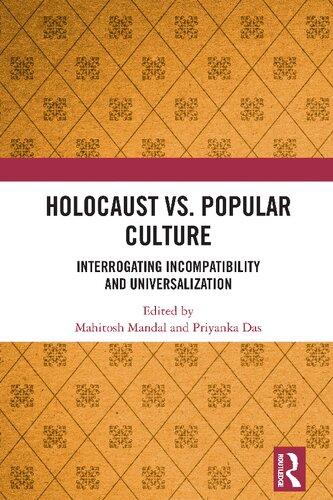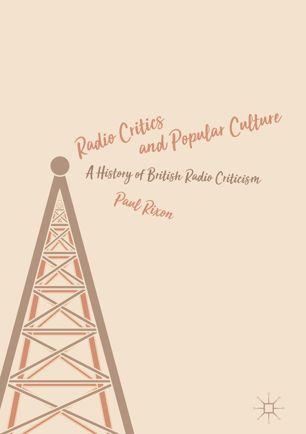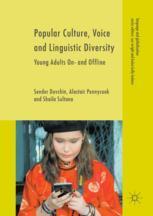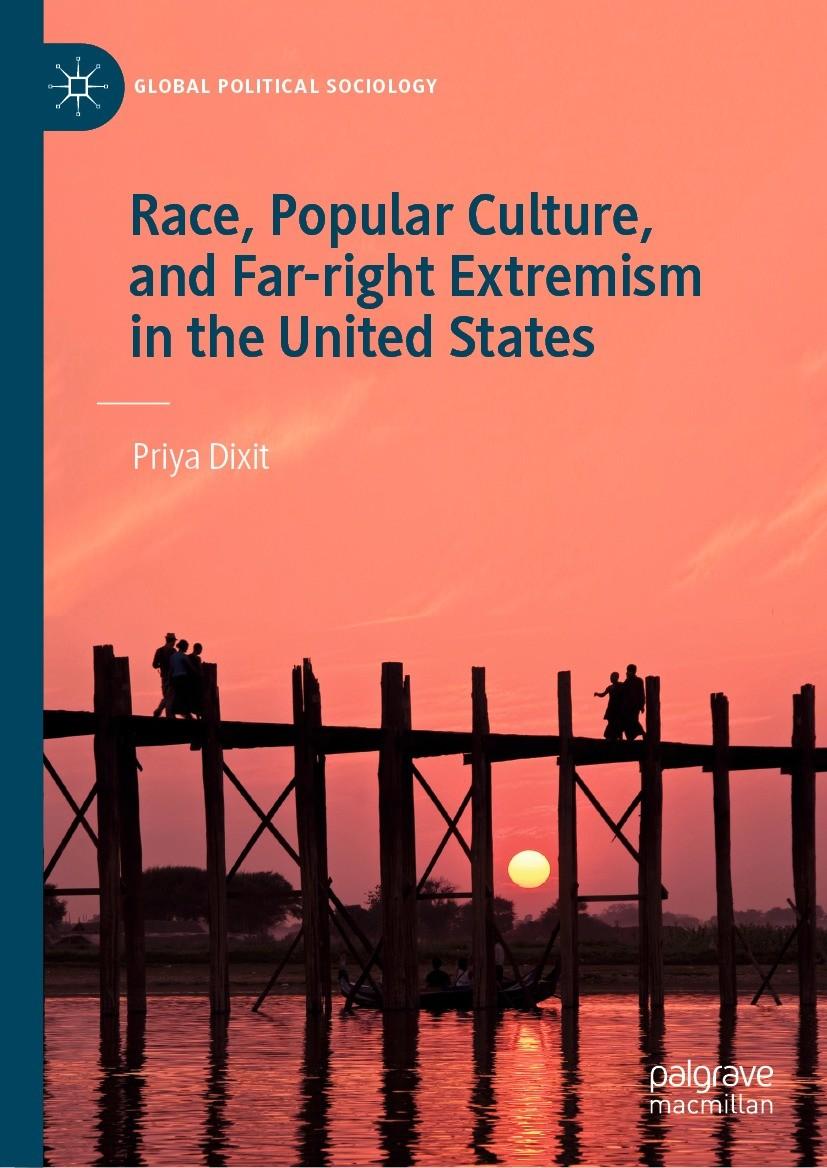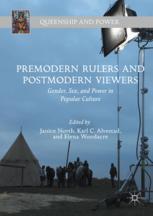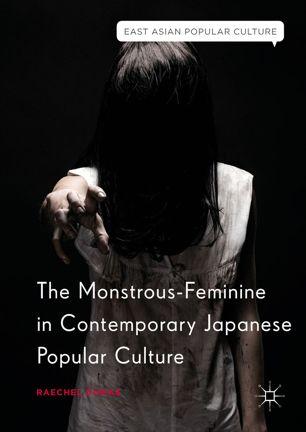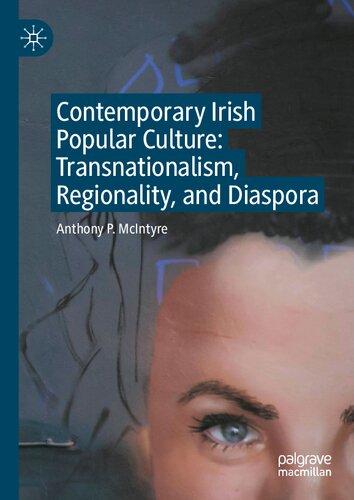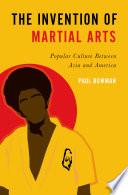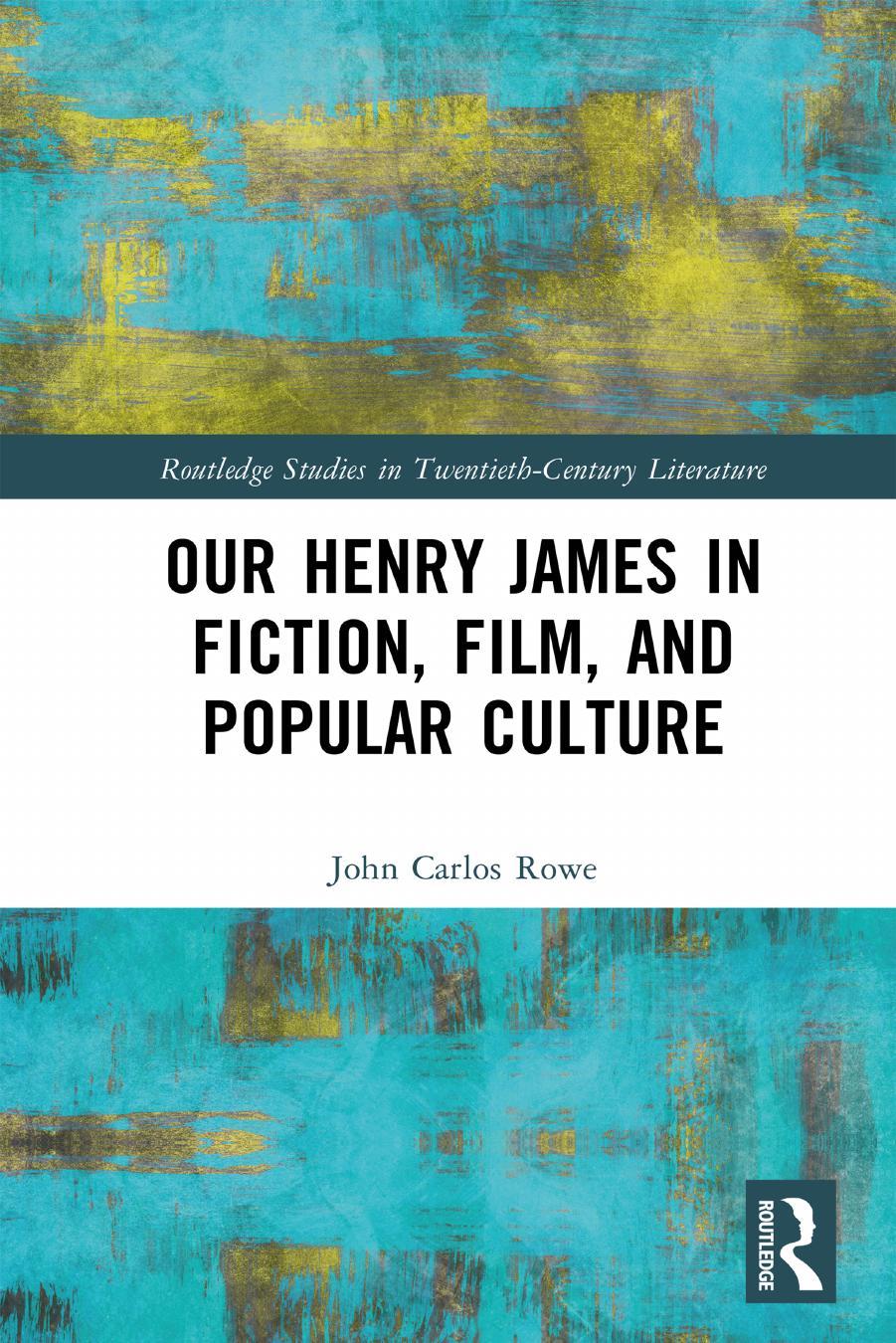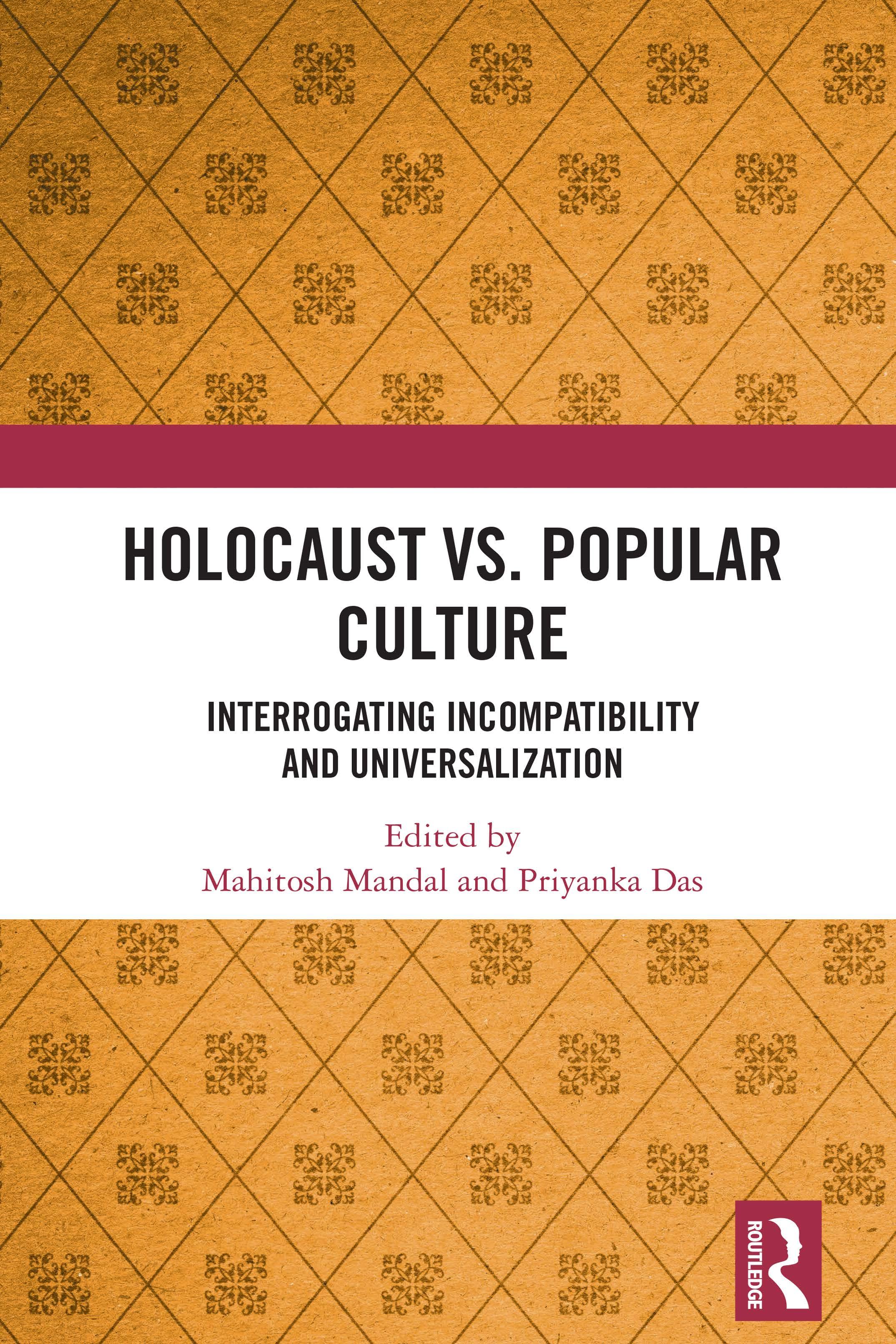Holocaust Versus Popular Culture
A Critical Introduction
Mahitosh Mandal and Priyanka Das
The Versus Thesis
Two parallel facts can be observed in the continued response to the Holocaust— the condemnation of its artistic and cultural representation and the increasing globalization of the Holocaust memory through Popular Culture. This volume is an attempt to renegotiate these binary tendencies defined, respectively, as “incompatibility” and “universalization.” To claim that the Holocaust and Popular Culture are incompatible is to primarily emphasize that the Holocaust is an event that is unique, unspeakable, unrepresentable, irreproducible, and non-sellable (not-forsale, as opposed to being unsellable). To claim that Popular Culture contributes to the universalization of the Holocaust memory is to highlight how it plays a role, however flawed, in keeping that memory alive across national and transnational audiences and forcing us to start renewed conversations on the Holocaust. These two claims, to be elaborated following, are oppositional, and critics are divided, either siding with the incompatibility argument or advocating the cause or the defense and justification of Popular Culture. This volume brings together both the views, argued freshly by 17 contributors, to not only make sense of the binary between the Holocaust and Popular Culture but also open up a fresh possibility to “deconstruct” it, without being unethical and irresponsible.
Deconstruction is a critical commonplace today. To deconstruct, in this context, is primarily to suspect, interrogate, decompose, de-hierarchize, de-essentialize, and decenter. Since both sides of the argument are vehemently presented and equally contested, at least in this post-memory world, time is ripe to deconstruct each of them. This does not mean we negate either of the arguments. To deconstruct is not to negate. This does not imply, more significantly, that such deconstructive gesture might end up making this volume just another covert act of trivialization of the Holocaust. By Jacques Derrida’s own admission, while the notion that deconstruction is “a-historical and a-political” is popular among the Anglo-American philosophers, an equally common notion, exactly the opposite, is that “deconstruction is a political radicalism, that it is too political” (Ben-Naftali). We argue that the radical possibilities that deconstruction entails is not only antiestablishment but also useful for the cause of oppressed “other.” Deconstruction, thus, involves, as Richard Kearney reminded us years back, “the question of ethical responsibility.” For him,
DOI: 10.4324/9781003251224-1
Mahitosh Mandal and Priyanka Das
“deconstruction’s obsession with alterity is compatible with the ethics of ‘increased responsibility’ ” (Kearney quoted in Sarukkai 1407). According to Sundar Sarukkai, who develops on the concept of otherness via Derrida and Kearney:
Deconstruction, unlike many mistaken accounts of it, partakes a responsibility which in its foundational sense is a search for the other. The continued onslaught on the reduction and representation of the other impels the ethical directedness of deconstruction which above all becomes “an openness towards the other”
(Sarukkai 1407)
The possibilities of reading the responses to the Holocaust in conjunction with deconstruction were initiated by Derrida himself. It is true that Derrida, who experienced antisemitism and expulsion from school due to his Jewish identity, did not have to face the Nazi atrocities because he was born and, during the Holocaust was based, in Algeria. Nevertheless, his interrogation, but not rejection, of a certain absolutist approach to the Holocaust involving an exclusive reading of it in terms of its uniqueness and Jewish specificity can be an important direction to follow. As Derrida observes, “I have no cut-and-dry answer to this question [the question of Holocaust’s Jewish specificity], but this is the question I try to ask myself” (Ben-Naftali, italics added). To interrogate, more than to answer, seems to be the implication. This volume is placed before the reader in the spirit of questioning the bifurcated responses to the relation between the Holocaust and Popular Culture. This is what explains the word “interrogating” included in the subtitle of the book.
The “versus thesis” is quite simply the idea that Popular Culture and the Holocaust constitute a binary and are incommensurable. It implies that the expression “Holocaust Popular Culture” is a contradiction in terms. The binary implies that the Holocaust is a sacred subject and it must not be trivialized through Popular Culture understood in whatever sense. Nobody would deny the fact that every act of commemorating the Holocaust must involve an ethical responsibility toward the victims. The question is, is Popular Cultural response to the Holocaust necessarily devoid of such responsibility? In what follows, both sides of the argument are fleshed out to make better sense of this question and to develop ways to deconstruct the binary at stake.
This binary, one could mention at the outset, needs to be historicized. The initial responses to the representation of the Holocaust in Popular Culture, in the immediate aftermath of the Holocaust, were marked by vehement condemnation. However, with the proliferation of Popular Cultural representations of the Holocaust, a kind of defense of Popular Culture has also emerged slowly but strongly. The more we move temporally away from the Holocaust, one could argue, the more the defense and justification of Popular Culture seems to have been bolstered. This does not mean the incompatibility argument has been completely overshadowed by the argument about universalization. From a structuralist point of view, one could argue that the fundamental structures of the conflict between the Holocaust and Popular Culture are somewhat ahistorical because they still persist and, one could
Holocaust Versus Popular Culture 3 say, shall persist in the future. Both sides of the argument, therefore, need to be explored at length to properly locate the “versus thesis.” This is why this volume takes into consideration various points of intersection between the Holocaust and Popular Culture across a broader time frame from the 1940s to 2021.
The conflicting responses to the representation of the Holocaust have already been defined, albeit using standpoints and terminology different from those used in the current volume, by some Holocaust studies scholars. Two scholars can be mentioned here, although others like Peter Novick are also equally important. Alan Mintz theorizes what he calls the “two models in the study of the Holocaust culture”—the “exceptionalist” model and the “constructivist” model. The exceptionalist model is described as “a conception of the Holocaust as an unprecedented event that transformed our understanding of the world and produced a literature [testimonies, predominantly] that can be understood only internally and by reference to itself.” The constructivist model, on the contrary, is understood as “the cultural lens through which the Holocaust is perceived” because “the cultural systems of particular societies are slow to absorb such an event and do so only within the terms of that particular culture” (Mintz xi). While Mintz’s theorization is important for us, he does not delve into a) absolute incompatibility, implying a total ban on any representation of the Holocaust and b) the contrast that is specific to the complex and comprehensive relation between the Holocaust and various forms of Popular Culture. He discusses literature by the survivors, which can be difficult to categorize as Popular Culture, and three American films, which are read emphatically from the perspective of defense of cinematic representation. In other words, the “versus thesis,” although touched upon through a different terminological framework in Mintz, is far from being comprehensively problematized with specific reference to Popular Culture, not just “culture,” and with reference to the global, not just American, context.
A similar theorization is found in a relevant work by Matthew Boswell as he contrasts the so-called “Holocaust piety,” a term coined by Gillian Rose in Mourning Becomes the Law, with what he describes as “Holocaust impiety.” Whereas the former tends to reject all forms of artistic representation considering the Holocaust as “ineffable,” the latter justifies the value of some, if not all, forms of artistic and cultural representation of the Holocaust. Boswell names a range of literary, musical, and cinematic works that accomplish an “impious” approach to the Holocaust: the poetry of Sylvia Plath and W. D. Snodgrass, the American and English punk and post-punk rock, and the films like Nuit et brouillard (Night and Fog), Shoah, The Grey Zone, and Inglorious Basterds. According to Boswell, such works “deliberately engineer a sense of crisis in readers, viewers or listeners by attacking the cognitive and cultural mechanisms that keep our understanding of the Holocaust at a safe distance from our understanding of ourselves.” These works comprise “qualities such as representational excess, anti-sentimentalism, avant-garde experimentalism or overt historical irreverence” (Boswell 3). According to Boswell, “such impieties are rarely directed at the dead; they are more usually meant as an affront to the living, attacking those who see no connection between historical atrocity and their own values, political systems and day-to-day lives” (Boswell 4).
Mandal and Priyanka Das
Boswell’s focus on specific, experimental, and anti-sentimental forms of representation of the Holocaust is different from the focus of the current volume that deals with Popular Culture in general and, in some respect, launches a defense of Popular Culture. With reference to Rose’s formulation of Holocaust piety, one might reject all of Popular Culture as blasphemous misrepresentation of the Shoah. This volume aims to deconstruct such a view.
Explicating Incompatibility, Interrogating Universalization
Artistic representation of the Holocaust in general and Popular Cultural representations of the Holocaust in particular have been criticized and even condemned by many. In order to make sense of the incompatibility between the Holocaust and Popular Culture, some of these criticisms are mentioned next.
First, Theodor Adorno famously claimed that “writing poetry after Auschwitz is barbaric” (Prisms 33). He later clarified that writing poetry was barbaric but not impossible and that “perennial suffering has as much right to expression as a tortured man has to scream” (Negative Dialectics 362). Arguably, Adorno implied that one needed to reconsider aesthetics when it came to the representation of the Holocaust. Conventional frameworks of representation would completely fail to capture the Holocaust trauma. Adorno’s statement had a tremendous impact not only on Holocaust scholars but also on a survivor and poet like Paul Celan, who shifted his entire poetics from the lyrical and the comprehensible (for example, in a poem like “The Fugue of Death”) to the cryptic and the obscure (for example, the later poetry of Celan including a poem like “Speak You Too”). As John Felstiner has indicated, the later poetry of Celan is marked by an implicit acknowledgment of the limits of language in capturing the Holocaust trauma, alongside fragmentation and incoherence faced while articulating the same (Felstiner 139, 188–89).
Second, some Holocaust survivors feel that the experience of the Holocaust is “untransmutable” because it happened in a place and time that seem to be outside our usual sense of the chronotope. The Holocaust survivor Yehiel Dinur, for instance, while presenting himself as a witness at the Eichmann trial in 1961, described his experiences as having occurred in a different planet, “the Auschwitz planet,” which operated following its unique laws quite distinct from those of ours (Crim 1). Dinur’s parabolic approach to define Auschwitz within a courtroom triggered the judges to urge him to be precise in his response to their specific queries. But perhaps that was the only way Dinur could express his thoughts. Dinur’s loss of consciousness at this point sent a shock wave, turning it into a crucial moment in an otherwise, to use Arendt’s word, “banal” trial. The alien way of living that Dinur stresses finds echoes in Elie Wiesel’s words: “Auschwitz and Treblinka seem to belong to another time; perhaps they are on the other side of time. They can be explained only in their own terms” (Wiesel quoted in Crim 2). Wiesel even described the Holocaust as ahistorical because “the Holocaust transcends history” (Wiesel quoted in Rothberg, Multidirectional Memory 8).
Third, according to some survivors and scholars, the testimony of the survivors is the only authentic way to learn about the Holocaust, and Popular Cultural (re)
Versus Popular Culture 5
presentation of the Holocaust is blasphemous and transgressive. Wiesel, a staunch advocate of this position, was outraged at the American television series Holocaust (1978) for its vulgarization of the Holocaust memory and trivialization of the sufferings of the victims (Mintz 24–25). He also claimed that “any survivor has more to say than all the historians combined about what happened” in the Holocaust (Cargas 5). The literary and cultural representations of the Holocaust are, for him, a blasphemy. This is what he says, in Dimensions of the Holocaust: Lectures at Northwestern University, on this issue:
“The Holocaust as Literary Inspiration” is a contradiction in terms. As in everything else, Auschwitz negates all systems, destroys all doctrines. . . . Ask any survivor and he will tell you, and his children will tell you. He or she who did not live through the event will never know it. And he or she who did live through the event will never reveal it. Not entirely. Not really. Between our memory and its reflection there stands a wall that cannot be pierced. The past belongs to the dead and the survivor does not recognize himself in the words linking him to them. We speak in code, we survivors, and this code cannot be broken, cannot be deciphered, not by you no matter how much you try. A novel about Treblinka is either not a novel or not about Treblinka. A novel about Majdanek is about blasphemy. Is blasphemy. (Wiesel et al. 7)
Similar to Wiesel, Art Spiegelman criticized Popular Culture as suffering from “the problem of (re)creation for the sake of the audience’s recreation” (Spiegelman quoted in Mintz 146). He condemned Popular Cultural representations of the Holocaust, marked by sensationalism, by describing them as “Holokitsch” (Chute 260–261). In a similar vein, Claude Lanzmann, the director of the documentary Shoah, argued against certain artistic transgressions very much applicable in the context of Popular Culture. He asserted:
The Holocaust is unique because it created a circle of flame around itself, a boundary not to be crossed, since horror in the absolute degree cannot be communicated. To pretend that one has done so is to commit the gravest of transgressions.
(30)
Fourth, Popular Culture shifts the attention from the testimony of the survivors to fictionalization of the Holocaust, thus misrepresenting the Holocaust and doing injustice to the Holocaust memory. This line of argument is articulated fully by Sophia Marshman, who argues that the increase in Popular Cultural engagement with the Holocaust has happened at the cost of sidelining the testimonies of the survivors and commodification of the Holocaust, causing a great damage to the Holocaust memory. She contends that the Holocaust and Popular Culture are incompatible at all levels and that the latter always misrepresents and misuses the former. For her, Popular Culture “sanitizes” the Holocaust because ultimately
Mahitosh Mandal and Priyanka Das
“popular media tampers with history to make it more acceptable to the audience” (14). She further argues:
Without testimony we can never know the Holocaust. Testimony urges meditation and contemplation rather than encouraging us to consume an image of the Holocaust in the manner of Schindler’s List. Through testimony, we come to understand the inaccuracies of most Holocaust films and novels. The distortions of the culture industry have been such that, with testimony increasingly marginalized, many people do not realise that the “Holocausts” on offer are mere reproductions substituted for the real thing.
(17)
Therefore, the only way to approach the Holocaust, according to her, is to revive the survivors’ testimony. A similar argument is developed in Tim Cole’s tellingly titled book Selling the Holocaust: From Auschwitz to Schindler: How History is Bought, Packaged, and Sold. For Cole, “Tourists in Krakow, Poland, do not visit the ghetto area because that is where the Holocaust ghetto was located. Rather, they visit the ghetto area because that is where Spielberg filmed his movie” (Cole quoted in Kaźmierczak 101). According to Cole, Popular Cultural representations of the Holocaust “skirt the horrors of the Holocaust and offer us something much more palatable in its place,” and it uses “cunning, goodness and ingenuity” to “defeat the Holocaust and bring about salvation” (Cole quoted in Kaźmierczak 107). Cole demonstrates this point with reference to some of the most popular Holocaust films:
Schindler’s List shows us the exceptional story of 1,100 Polish Jews who were saved, rather than killed, during the Holocaust. Life Is Beautiful shows us the exceptional story of a boy who survived a concentration camp, rather than being killed. Jakob the Liar shows us the exceptional story of a ghetto that was liberated, rather than liquidated. Train of Life shows us the exceptional story of a “deportation” train that took Jews to freedom, rather than to a death camp.
(Cole qtd. in Kaźmierczak 107)
For Kaźmierczak, through the “mechanisms” of “standardization, repetition, unification, mediatization and substitution through analogy,” Popular Culture “creates the conviction that the Holocaust happened in the far, far, ‘far-gotten’ past and is real only in the fictional worlds” (107). This, combined with the “mythologization” of the Holocaust, has been reductive of the Holocaust memory and has led to unthinking, mechanical “performing” of the Holocaust memory. In Kaźmierczak’s translation of a poem titled “Origami” by Julian Kornhauser, one finds how Holocaust tourism is marked by the tourist’s boredom and superficial interest:
On the train from Cracow to Auschwitz
The three young Japanese
are folding origami killing the time.
We go past hills and forests, and a paper swan sleepily glances at the blazing grass.
(Kaźmierczak 104)
In Popular Culture, it is not enough to represent the Holocaust; one must make a product that can be sold profitably. This is why not all episodes of the Holocaust qualify as worth representing in Popular Culture. Only few that are “spectacular,” “worth watching,” and have “commodity” value do. As Cole remarks, Popular Culture, thus, generates “a sugarcoated Holocaust” to be “swallowed” by its consumers (Cole qtd. in Kaźmierczak 109). Therefore, Kaźmierczak writes, “The reception of the Holocaust [in Popular Culture] is synonymous with the reception of the controlled ignorance” (109). In this sense, the YOLOCAUST project, which involved the German-Israeli artist Shahak Shapira juxtaposing tourist selfies in Berlin’s Holocaust memorial with actual images from the concentration camps and posting such “hard-hitting images” on social media sites, exposed “at best, unthinking, at worst disrespectful attitude of tourists who take selfies for self-publicizing reasons without thinking about where exactly they are taking them and what that site represents” (Berberich 8). As Kaźmierczak puts it succinctly:
Popular culture is a system of possible and autopoietic substitutions: nostalgia instead of knowledge, visiting instead of exploring, watching instead of thinking, beauty instead of death, Eros instead of death, mythologization instead of interest and silence, analogy instead of discourse, sentiments instead of discussion, demagogy instead of dialogue, present instead of past and future.
(110)
Fifth, Popular Culture tends to universalize the Holocaust and, thereby, destroys its Jewish uniqueness—Holocaust being considered as a unique Jewish event—and, thus, ends up committing the “de-Judaization” of the Holocaust, which many survivors, including Wiesel, object to. As Manfred Gerstenfeld remarks, de-Judaization in this context is “not to be confused with the laudable effort to draw conclusions for all humanity from the genocidal catastrophe caused to the Jewish people.” Instead, de-Judaization of the Holocaust involves the attempt “to rob the Jews of their painful memories or to weaken their perceived hold on the memory of this genocide” (Gerstenfeld quoted in Gray 74). To de-Judaize is to consider the Jews as “accidental victims” or to refuse to accept the fact that “the collective treatment of the Jews was uniquely different [compared] to other victims of Nazi persecution” (Gray 74). When works of Popular Culture, in an attempt “to market a product to a wider audience,” “revolve around non-Jewish protagonists or marginalise the Jewishness of the characters” (Gray 75), they may be accused of de-Judaization of
Mahitosh Mandal and Priyanka Das
the Holocaust. Schindler’s List, with a leading German protagonist, and Sophie’s Choice, where the victim is a Polish Catholic, are examples of de-Judaization, according to Gray. The case of Anne Frank stands out in this context. As Gray adds:
Within the representations of Anne Frank, her Jewish culture and religion has normally been overlooked. It is particularly the use of Anne Frank as a symbol of generalised rather than Jewish suffering which has characterised both the universalisation and the consequent de-Judaisation of the Holocaust.
(Gray 75)
Here, one could emphasize that blatant misrepresentation of the Jews and the Holocaust memory and the continuation of antisemitism keeps happening in the field of Popular Culture, even in the context of America, and this might put into question some of the views of Alan Mintz, elaborated in the next section, who claims that Popular Culture has been instrumental in sensitizing the Americans about the Holocaust. Among many instances, two American sitcoms may be mentioned in this context, indicating the latest forms of Holocaust representations in television series, an important development in contemporary Popular Culture: CBS’s The Big Bang Theory and Netflix’s Never Have I Ever. Both the sitcoms have fictional Jewish characters as main leads, played by actors of Jewish origin, and can thus be viewed as empowering but they contain problematic Jewish portrayals too. Howard Wolowitz of The Big Bang Theory is a lustful degenerate who by default objectifies every woman he encounters. Howard’s innate sexual perversion is projected such as to resonate with the Nazi antisemitic propaganda including the perception of “Jewish (and black) men as sexual predators, insatiable in their lust for white women” (Bergen 11). Antisemitic humor transgresses friendly banters and gets cemented in Sheldon’s devout-Christian mother’s frequent jokes on Howard’s Jewish identity. Throughout the series, Howard is depicted as the staple fodder of laughter, both to the viewers and to the other characters. Both inwardly and outwardly, Howard is a creepy deviant, an embarrassing “other,” who is morally questionable and, hence, is distinct from the other politically correct nerds in the sitcom.
Mindy Kaling’s Never Have I Ever (2020–2021) has been applauded for celebrating diversity because of its focus on diasporic and immigrant culture. Though it goes beyond tokenism toward sexual and racial minorities, certain features of the sitcom have raised controversies, especially from Jewish viewers. Ben Gross, played by Jaren Lewison, is initially depicted as a racist, sexist, and highly insensitive teenager who is mercilessly competitive. Ben’s materialist worldview, affluent background, and dysfunctional family fall in line with the unidimensional portrayal of Jewish characters in the media. While Mira Fox highlights how Ben’s character is “glaringly clichéd” and is subjected to “pernicious stereotypes,” Meena Venkataraman labels the show antisemitic for its Jewish caricatures (Venkataraman). What deserves more critical intervention is the obvious allusion to Nazism and the Holocaust. Mr. Shapiro, the history teacher at Sherman Oaks High, is another Jewish caricature, “clownish” and “detach[ed] from reality,” who approaches the subject
Holocaust Versus Popular Culture 9 of fascism and Holocaust with utter lack of seriousness (Forman). The gravity and sensitivity required, both on the part of the instructor and the learner, to address the Holocaust within a classroom space, is entirely absent in the show. The Holocaust is generalized in a collective understanding of the war trauma, and more offensively discarded, when Paxton’s Japanese ethnicity is waged against Ben’s Jewishness. On another occasion, Devi, a diasporic Hindu teenager, aggressively tells Ben that she wished the Nazis killed him too. This demonstrates how an American school might shield its students against the ugly naked truths of the Holocaust. The humor that this scene is clouded with manifests that though antisemitism in America is constitutionally punishable, it is not discouraged behind closed doors.
Sixth, the understanding of the Holocaust in conjunction with other genocides has been condemned because such “relativization” of the Holocaust fails to consider its uniqueness as a Jewish suffering caused by the Nazis. Deborah Lipstadt, for instance, indicates that relativization is tantamount to Holocaust denial. According to her, comparisons and analogies relativize the Holocaust and this, similar to denying that Holocaust ever happened, leads to blurring of “boundaries between fact and fiction and between persecuted and persecutor” (Lipstadt qtd. in Rothberg 9).
These are some of the crucial instances of advocating the incompatibility between the Holocaust and Popular Culture and condemning the universalization of the Holocaust through Popular Culture. We have not aimed at offering a complete survey of criticism here but only some of the representative ones which can establish the argument at stake. Overall, the representation of the Holocaust in Popular Culture has been variously condemned as a misrepresentation involving trivialization, sensationalization, and de-Judaization of the Holocaust.
Advocating Universalization, Interrogating Incompatibility
There are many scholars who oppose the incompatibility argument and claim that Popular Culture can productively contribute to the representation of the Holocaust and continued Holocaust remembrance. They also support the so-called relativization of the Holocaust in transnational contexts. Some of their arguments can be explained as in the following.
First, Popular Culture, given its appeal to the masses, is instrumental in spreading awareness about the Holocaust. The best example is, perhaps, the Americanization of the Holocaust through a television series like Holocaust or a film like Schindler’s List or the publication of The Diary of Anne Frank and its film and stage adaptations. All these, according to Mintz, contributed to a nationwide interest in the genocide, leading to the establishment of the United States Holocaust Memorial Museum. As Mintz argues at length, it is remarkable how a European genocide eventually became a “salient” aspect of American consciousness and how Popular Culture contributed to this process (3–35).
Second, some scholars argue that the continuous mystification of the Holocaust as the unspeakable and incomprehensible may prevent any fruitful investigation of and engagement with the Holocaust. Giorgio Agamben, who does not deny the uniqueness of the Holocaust asks, “But why unsayable? Why confer
Mahitosh Mandal and Priyanka Das
on extermination the prestige of the mystical?” (Agamben 32). Agamben rather advocates confronting the “unsayable” even if it means confronting the evil in ourselves. In a similar vein, Peter Hayes, in a book titled Why?: Explaining the Holocaust, argues that the Holocaust, like any other historical event, can and must be “explained.” He defines the Holocaust, explains the Nazi justifications for it, and answers why the Jews could not launch an effective attack. Thus, drawing on Hayes, it can be stated that the Holocaust was the combined product of an age-old idea—that the Jew is the benighted, backward, and bacterial “other” who is, therefore, to be hated, penalized, converted, segregated, degraded, dehumanized, and murdered—and of a particular political event—the advent of Nazi Germany, which had the power, mechanism, and apparent ideological justifications to annihilate the Jewish community as a whole. In this vein, it is possible to argue the Popular Culture contributes to a fruitful demystification of the Holocaust by attempting to represent it on the screen or on the page, thereby generating self-critical, politically informed, and ethically responsible discussions on the subject in contemporary times.
Third, the concept of the survivor and testimony needs to be reconsidered, some scholars feel. For example, Agamben refers to the heterogeneity of the survivors and their testimonies. He groups the survivors under three categories: a) those who prefer complete silence and have decided to “never speak of Auschwitz,” b) those who ensure the survival of witness, and c) those, like Primo Levi, who “speak of it incessantly,” feeling an “unrestrainable need” to tell their stories (Agamben 15). The very dependence on testimony is questioned by Agamben through his reading of Levi. He refers to an integral lacuna at the core of the testimonies: “The survivors bore witness to something it is impossible to bear witness to.” Levi, who bears survivors’ guilt, calls the survivors a privileged category and distinguishes them from the “Muslims [who] did not speak” (Levi qtd. in Agamben 33). As Levi notes:
I must repeat, we the survivors are not the true witnesses. . . We survivors are not only an exiguous but also an anomalous minority: we are those who by their prevarications or abilities or good luck did not touch bottom . . the Muslims, the submerged, the complete witness, the ones whose deposition would have a general significance. They are the rule, we are the exception. (Levi qtd. in Agamben 33)
The term “Muslim” or the “Muselmann” could be annotated here. According to the Yad Vashem website, it is a
German term widely used among concentration camp inmates to refer to prisoners who were near death due to exhaustion, starvation, or hopelessness. . . Some scholars believe that the term originated from the similarity between the near-death prone state of a concentration camp Muselmann and the image of a Muslim prostrating himself on the ground in prayer.
(“Muselmann”)
Admittedly, the equating of Muslims and the starving Jews can be problematic and offensive to the Muslim community. At the same time, this also indicates the usual human habit of comparison, describing one human group in terms of another. Be that as it may, the Muslim of the concentration camp could be easily recognized in terms of their “physical and psychological decline” and the fact that they “could not stand up for more than a short period of time” (“Muselmann”). Other prisoners feared they might contract the condition from the Muslims and thus maintained distance. The Nazis, on the other hand, considered them “undesirable” because they were not fit for work or able to endure the camp rules and because they “had no chance for survival” and “would not live for more than a few days or weeks.” The Muslims, therefore, were “the first to be sentenced to death” (“Muselmann”). The survivor may not offer us the most horrible testimonies, as both Levi and Agamben seem to imply. Nor could the dead testify. And the Muslims who lived between the dead and the living were the true witness but they were not in a condition to testify. As Levi notes, “Weeks and months before being snuffed out, they [the Muslims] had already lost the ability to observe, to remember, to compare and express themselves. We speak in their stead, by proxy” (Levi quoted in Agamben 34). Thus, the survivor testimonies may, in some cases, run the risk of being incomplete and lacking. Therefore, Agamben makes the pertinent observation: “The value of testimony lies in essentially what it lacks; at its center it contains something that cannot be borne witness to and that discharges the survivors of authority” (Agamben 34). Similar arguments have been made by Jean-François Lyotard, Shoshana Felman, and Dori Laub. Lyotard considers the impossibility of bearing witness. According to him, the very text of the informant’s testimony is problematic “either because he or she should have disappeared or else because he or she should remain silent” (Lyotard quoted in Agamben 35). Felman and Laub described the Shoah as an “event without witnesses . . . since no one can bear witness from the inside of death . . . and from the outside—since the ‘outsider’ is by definition excluded from the event” (Felman and Laub quoted in Agamben 35). Derrida goes on to problematize the testimony further. He points to the dangerous possibility that one could always argue that “there is no living testimony, either because those who experienced this have disappeared in the crematoria, or because—as these are testimonies which appeal to faith, to belief—it may always be considered that the witnesses lie.”
For him such horrible forms of negationism and revisionism are “inscribed in the very structure of extermination” (Ben-Naftali). Aaron Kerner, on the other hand, observes that “making the Holocaust exclusive property [of the survivors] is not only dubious but also short-sighted if the intention is to preserve a vital memory” (Kerner 8).
Fourth, the incompatibility between the Holocaust and its artistic and cultural representations can be refuted at several levels. In a unique rejoinder to positions taken by the likes of Wiesel, Slavoj Žižek claims that “the holocaust [sic] can only be represented by the arts” (“On Holocaust and Art,” italics in the original). This is because “when truth is too traumatic to be confronted directly, it can only be accepted in the guise of a fiction.” Žižek states that “a direct documentary about the holocaust [sic] would be obscene, even disrespectful towards the victims” (Žižek,
Mahitosh Mandal and Priyanka Das
“On Holocaust and Art”). He also counters Adorno by saying that “it is not poetry that is impossible after Auschwitz, but rather prose. Realistic prose fails, where the poetic evocation of the unbearable atmosphere of a camp succeeds” (Žižek, “On Holocaust and Art,” italics in the original). Adorno’s “impossibility,” for Žižek, is “an enabling impossibility” because “poetry is always, by definition, about something that cannot be addressed directly, only alluded to” (Žižek, “On Holocaust and Art”). Categorizing films such Life Is Beautiful, Jakob the Liar, and The Train of Life as “Holocaust comedies,” Žižek further argues that comedy is an effective way-out from the impasse of representation because it “accepts in advance its failure to render the horror of the holocaust [sic]” (Žižek, “Laugh Yourself to Death”).
After all, “we cannot directly talk about a trauma, describe it, but this traumatic excess can be ‘shown’ in the distortion of our speech about the trauma, in its elliptic repetitions and other distortions” (Žižek, “On Holocaust and Art”). From a slightly different point of view, it can also be argued that the mimetic critique of Popular Culture as something that sidelines the survivor’s testimony is somewhat misplaced if one considers the fact that the objective of Popular Culture might not necessarily be an authentic representation of history but a reflection on the contemporaneity of history (i.e., the possibilities of genocide looming large around us and our own implicit participation in the same). In other words, the audience’s introspection rather than reproduction of a historical truth might be the primary goal of the Popular Culture representations of the Holocaust. The objective of Popular Culture is humble insofar as it evokes the interest of the audience in the Holocaust and inspires them to study more about the same even if it involves deconstructing Popular Culture itself. As a matter of fact, art works and artifacts of Popular Culture are used as pedagogic tools across the world, and it is through these tools, albeit flawed, that the discussion and research of the Holocaust is initiated. One could agree with Kerner, who remarks that a (re)presentation of the Holocaust, whether a documentary or feature film, “is always already an imperfect narrative construct” (5), and with Hilene Flanzbaum, who observes, “Let’s all agree right now that no artistic representation of the Holocaust will ever sufficiently depict the horrors of that event—and move on to more explicit and meaningful discussion” (Flanzbaum qtd. in Kerner 5).
Fifth, the uniqueness of the Holocaust has been criticized by many and the demystification of the Holocaust through Popular Culture has been deemed necessary. Such an approach has not only been undertaken by literary scholars but also by historians such as Dirk Moses or Donald Bloxham. The idea that the Holocaust is a unique Jewish event, it can be argued, is problematic because many other minority groups were also victimized during the Holocaust. By (re)presenting the Holocaust and, thereby, triggering debates and discussions and analysis surrounding the Holocaust, one opens up the possibility of historicizing and intellectualizing the Holocaust albeit moving away, some claim justifiably, from abstraction of the Holocaust as a unique, singular, particularistic, and ahistorical Jewish event. Derrida, for instance, interrogates the claim that every other genocide has to be interpreted by reference to the Shoah. What does it mean, he asks, to “think . . . any genocide . . . any crime against humanity, as crime against the Law, against the
Torah, against the commandment ‘Thou shalt not kill’ ”? Such stance, according to him, implies that “the Jewish people are chosen [in biblical sense]” even in “its infinite disaster” and that it is supposed to grant them “absolute privilege” even in regard to genocides whether these happened in South Africa or in Cambodia or at any other place in the world. Derrida, therefore, expresses his deep apprehension that the Shoah might eventually, “in two or three generations,” be relativized by being “classed” and categorized and “find its place as one episode, among so many others, of the murderous violence within humanity” (Ben-Naftali). Michael Rothberg, however, does not have any such apprehension. Rothberg theorizes memory as “multidirectional” and opposes the adherence to the uniqueness of Holocaust. Instead, he observes:
The emergence of Holocaust memory on a global scale has contributed to the articulation of other histories—some of them predating the Nazi genocide, such as slavery, and others taking place later, such as the Algerian War of Independence (1954–62) or the genocide in Bosnia during the 1990s. (6)
While it is true that “in the first postwar decades there was a necessity to assertions of the Holocaust’s specificity,” continuing to do so even now “is intellectually and politically dangerous” (8–9). “The dangers of the uniqueness discourse,” Rothberg points out, echoing others, “are that it potentially creates a hierarchy of suffering (which is morally offensive) and removes that suffering from the field of historical agency (which is both morally and intellectually suspect)” (9). For Rothberg, “the ever-increasing interest in the Nazi genocide distracts from the consideration of other historical tragedies” (9). As David Stannard argues, “the uniqueness argument ‘willingly provides a screen behind which opportunistic governments today attempt to conceal their own past and ongoing genocidal actions” ’ (Stannard quoted in Rothberg 9). Holocaust, thus, functions, according to Rothberg, as “screen memory” in an extended and slightly modified Freudian sense whereby highlighting it by the state bodies helps in suppressing and remaining silent about other localized genocides and atrocities. Instead of treating the Holocaust as unique, Rothberg suggests looking at memories as cross-referencing, interacting, and spiraling. Such a multidirectional approach to memory shows “how memory is . . . as often a spur to unexpected acts of empathy and solidarity” and can become “the very ground on which people construct and act upon visions of justice” (19). This is particularly true in a transnational age where the Holocaust memory is glocalized, that is, it is both global as well as local. As Sierp and Wüstenberg argue, “Memories are (trans) formed, displayed, shared, and negotiated through transnational channels, while maintaining their local rootedness” (324). One, therefore, needs to study the “tension between local and the supranational” (Sierp and Wüstenberg 324) not only at the level of the European continent, one can argue, but, in fact, globally.
Sixth, a mechanical adherence to the Holocaust metanarrative, based only on testimonies, can lead to a mere ritualized commemoration of the Holocaust. Popular Cultural representations, on the other hand, can prevent us from a collective
Mahitosh Mandal and Priyanka Das
amnesia about the Holocaust. As John Gross argues, “Holocaust denial may or may not be a major problem in the future, but Holocaust ignorance, Holocaust forgetfulness, and Holocaust indifference are bound to be” (Gross quoted in Mintz 131). For Gross, a film like Schindler’s List can “dispel” such ignorance and ensure that the Holocaust never fades into amnesia. As Alan Rosenbaum argues, “There is certainly an abiding wisdom in the recognition that the Holocaust has seared into the collective historical consciousness of humanity a new, indefeasible standard of evil” (7). Rosenbaum reminds us of the observation of George Santayana, “Those who cannot remember the past are condemned to repeat it” (Santayana 172). The genocidists must recollect the “barbaric Nazi methods” accordingly, and “we must be ever vigilant about the warning signs of a possible turn towards genocide” (Rosenbaum 21). A similar warning is given in the documentary Nuit et brouillard (Night and Fog), which ends on this ominous note from the narrator (as per the English subtitles):
Somewhere among us there are still Kapos, reinstated officers and anonymous informers. There are those who refused to believe, or only now and then. We survey these ruins with a heartfelt gaze certain that the old monster lies crushed beneath the rubble. We pretend to regain hope, as the image recedes, as though we have cured of that plague. We tell ourselves it was all confined to one country to one point in time. We turn a blind eye to what surrounds us and a deaf ear to the never-ending cries.
(Nuit et brouillard)
Similarly, Berberich argues against the ritualized Holocaust commemoration as she quotes the following lines spoken by the protagonist of Rachel Seiffert’s novel The Dark Room (2002) (albeit some may claim reliance on a novel to make such an argument is not unproblematic): “Every year it’s the fucking same. The students read survivors’ accounts. Everyone cries these ‘we didn’t do it’ tears. Then the essays get marked, the displays are packed away, and we move right on with the next project” (Seiffert qtd. in Berberich 6). Annual Holocaust commemoration, thus, is ritualized, as if “a box has been ticked—and the next item on the curriculum has to be covered” and thereby loses its meaning. Such commemoration “ultimately lacks the critical and continuous engagement that is necessary to meaningfully engage with the past” (Berberich 6). Genres like Holocaust fiction, Holocaust perpetrator fiction, and Holocaust comedies, Berberich argues, challenge “the sanctioned narrative” or the metanarrative of the Holocaust. But these must not be dismissed as “acts of commemorative sabotage” because these:
Works do not question the Holocaust, nor do they doubt the importance of remembering. What they do challenge is an over-simplified, ritualized, unreflective act of remembering merely for the sake of remembering. What these works of literature seek to do is to find new and meaningful ways of engagement with the past that make their readers think and reflect.
(Berberich 6)
In a similar vein, Demsky argues that: “As memory of the Nazis’ crimes against European Jewry becomes increasingly removed from contemporary life, embracing the growing array of complicating and attention-grabbing intersections may help ensure that this past is remembered at all” (1). For him, Popular Culture can “rejuvenate” (2) the Holocaust memory, “invigorating the memorialization as much as they vulgarize it” (4). He demonstrates this through diverse kinds of “bastardized representations” (3) including American sitcoms and social media memes (particularly the meme of the Pepe Frog). By extension, the debates on social media, for instance, about the tourist selfies at the Holocaust memorials or about Holocaustthemed ice-dance by Tatyana Navka paradoxically keep the discussions about the Holocaust going.
The list of scholars who support the incompatibility argument as well as those who advocate the universalization argument is much longer. Holocaust scholarship is unimaginably vast, and, in a short introduction like this, we cannot include every scholar or every survivor testimony or every aspect of the arguments. However, as the above points indicate, both the arguments are strong in themselves while at the same time both can be subjected to interrogation. It is also clear that Popular Cultural representations of the Holocaust, although problematic at many levels, can contribute to the revitalization of the Holocaust memory. However, rather than taking any side, this volume is more interested in interrogating both the standpoints and exploring the possibilities of de-hierarchizing the binaries at stake without being ethically irresponsible. The contributions in this volume are an effort at helping the reader to develop a critical understanding of the interface between the Holocaust and Popular Culture and carry forward the Holocaust memory in a more meaningful manner.
Location of the Volume
This volume is written by contributors from across the globe, and the target audience is also global. However, the idea of this volume emerged from within an Indian context. Even though there is an increasing proliferation of Holocaust literature and Holocaust Popular Culture, the literature and cultural studies departments in Indian and South Asian universities do not substantially engage with this vast body of literature and Popular Culture. To address this lacuna, we launched a master’s level course on Holocaust and literature at the Department of English, Presidency University, Kolkata, perhaps a first of its kind in the literature departments in India. Navras J. Aafreedi began a course on Holocaust history approximately at the same time at the Department of History of the same University to address a similar gap in history departments of South Asian universities. The attempt was to carve out a greater space within Indian and South Asian academia for Holocaust studies. Over the last few years, we have also been witnessing how the Holocaust and Nazism are being evoked in the Indian context. In recent times, in India, the right wing Hindutva-based political party, which is infamous for its antiminority policies and whose leader, Narendra Modi, has occasionally been compared to Adolf Hitler by opposition parties, has initiated a citizenship act whereby those who do
Mahitosh Mandal and Priyanka Das
not qualify as Indian citizens (basically people who are Muslims) would be segregated and put into detention camps. The protesters in India have frequently compared these camps with the Holocaust concentration camps and have described the Muslims as the “new Jews” and the whole situation as having the potential of leading to a “Muslim holocaust.” Irfan Raja draws attention to how Modi shares common characteristics with Hitler and has “Hitler’s mindset.” The leaders of the Modi-led Bhartatiya Janata Party keep suggesting that they are Aryans; therefore, they are superior to the Muslims of India. Raja states, “A tragic and horrible past is turning into a reality in India. Seriously, we are at the threshold of a probable Indian Muslim’s Holocaust” (“Is India sleepwalking toward a Muslim holocaust?”). Mahua Moitra, a member of the Indian Parliament, in her maiden speech in office, slammed the right-wing party by explaining how its treatment of the citizens manifested “all signs of early fascism.” While doing so, she mentioned a poster on “early warning signs of fascism” put up in the lobby of the United States Holocaust Memorial Museum in 2017 (Geeta Pandey). Whereas there are several examples of transnational representation and remembrance of the Holocaust, this specific Indian example goes on to show how, in the twenty-first century, a country far away from Europe, with no substantial connection with the genocide, takes recourse to Nazi history and Holocaust memory to make sense of contemporary nationalist politics. However, even though the Holocaust and Nazism have become terms of reference in contemporary political analysis and discourse in India, most of these discourses, we noticed, use the term Holocaust in an uninformed way and run the risk of trivializing it. Thus, the initial objective of the volume was to produce debates about the inevitable evocation of Nazi rhetoric in non-European contexts and the need to be aware of the question of trivialization.
As we delved deeper, we found that while trivialization of the Holocaust could happen in the transnational and non-Western context, a comparative study of the Holocaust and genocides in the Indian context was also possible, at least at the level of debates. At least two instances of atrocities emerged from Indian history and contemporary reality (apart from the present-day ghettoization of the Muslims, not just in Kashmir but across the country) as capable of being debated in conjunction with Nazism and the Holocaust. The first instance would be the 1947 Partition of India, and the second instance would be the centuries-old, and currently on the rise, caste-based atrocities against the Dalits (a political term adopted by the outcastes of India, earlier known as Untouchables and constitutionally designated as Scheduled Castes).
At multiple levels, there exists an incongruity between Partition historiography and Holocaust historiography. Partition of India and Pakistan involved the phenomenal physical and psychological devastation and the helplessness of individuals, irrespective of whether they were Hindus (meant to stay in India) or Muslims (asked to move to Pakistan). At least one million people died and fifteen million were displaced due to the Partition (Brocklehurst; Shashkevich). However, Partition as a political decision was not necessarily condemned at all levels. As Gyanendra Pandey argues, Partition historiography, by “justifying, or eliding” the violence, has rather moved away from recognizing it as a collective history (4). He insists that
Versus Popular Culture 17
violence, if not anything else, is a shared experience between the Pakistanis and Indians. But in the case of the Holocaust, the violence was not two-directional. The violence that originated from one group deciding the fate of an entire community along with a few others, is anything but shared. Therefore, it can be argued that while Partition violence was horizontal, Holocaust violence was vertical. Nevertheless, there are comparative possibilities of reading the Partition in conjunction with the Holocaust. For instance, Gyanendra Pandey’s analysis of liberal states detesting plural societies in a post-Smithian, economically competitive world may be extended to study the preconditions of both the Holocaust and the Indian Partition. However, a more interesting work, in this context, is Madhav Godbole’s The Holocaust of Indian Partition. Evoking the fact that Auschwitz-Birkenau Liberation Day is regarded as Holocaust Remembrance Day, Godbole suggested that India as a nation was in dire need of one such special day. He welcomes Prime Minister Narendra Modi’s declaration of August 14 as Partition Horrors Remembrance Day. However, one cannot miss the tint of right-wing sadism here in deciding the date and in the terminology. August 14 is celebrated as Pakistan’s Independence Day, and although the actual Partition and the accompanying horrors spread across months, there is perhaps no better way of vilifying the rival state than ascribing the word “horror” with this date. Godbole’s text, which attempts to equate the 1947 Indian Partition and the Holocaust, paradoxically, glorifies the very political ideology of fascism involving a celebration of Hindutva at the expense of Muslims.
Atrocities against Dalits in India, caused by the same rightist, Brahminical, and casteist ideologues for centuries, constitute another possible point of transnational engagement with the Holocaust memory. In today’s India, every 10 minutes a crime is committed against a Dalit and every day 8 Dalit women are subjected to sexual abuse (Jyoti; GoNews Desk). Massacres of Dalit families and lynching and murder of Dalits are daily phenomena. Anand Teltumbde, while analyzing the naked parading, mutilation, and murder of four Dalits in the village of Khairlanji in the Indian state of Maharashtra, offers a glimpse of the amount of atrocities suffered by the Dalits:
Keezhvenmani (in Tamil Nadu state; forty-four dalits burnt alive in 1968), Belchi (in the state of Bihar; fourteen dalits burnt alive in 1977), Morichjhanpi (an island in the Sundarban mangrove forest of West Bengal where hundreds of dalit refugees from Bangladesh were massacred during a government eviction drive in 1978), Karamchedu (Andhra Pradesh; six dalits murdered, three dalit women raped and many more wounded in 1984), Chunduru (also Andhra Pradesh; nine dalits slaughtered and their bodies dumped in a canal in 1991), Melavalavu (Tamil Nadu; an elected dalit panchayat leader and five dalits murdered in 1997), Kambalapalli (in the state of Karnataka; six dalits burnt alive in 2000) and Jhajjar (in Haryana state, adjoining the capital, New Delhi, where five dalits were lynched outside a police station in 2002). The incidents listed here will never figure in any history of contemporary India. Most Indians may never even have heard of these places. (40)
Mahitosh Mandal and Priyanka Das
Atrocities against the Dalits have been and can be analyzed in conjunction with various other forms of atrocity and genocide. For instance, Teltumbde, in Persistence of Caste, describes caste atrocities as “India’s hidden apartheid,” and Mandal compares the specific Dalit massacre at Marichjhapi (alternative spelling of Morichjhanpi) coordinated by a communist government in West Bengal in conjunction with the violence and genocide that occurred at the Soviet Gulag camps (Mandal, “Liars”). But other possible comparative studies can also be attempted for understanding the genocide from various perspectives. If the term Holocaust etymologically means “burning of everything,” then is it possible to describe casteist hatred leading to burning and shooting and massacres of Dalits as some kind of caste-based holocaust (with a lowercase “h”) or Dalit holocaust or even, to use a neologism, a kind of “holocaste”? If one can think of Black holocaust or Muslim holocaust, would it be possible, in a similar vein, to theorize “holocaste”? (Mandal, “Holocaste?”). It was the Indian thinker and Dalit icon Bhimrao Ramji Ambedkar (1891–1956) who opened up the possibility of studying Nazism, by extension the Holocaust, in conjunction with casteism or Brahmanism. It may be noted that Ambedkar was perhaps the only strong voice against Nazism from India during Hitler’s lifetime. Pointing out how Hitler opposed the British government for giving Indians political and educational liberty, Ambedkar stated, “The Nazi ideology is a direct menace to the liberty and freedom of Indians. Given this fact, there is the strongest reason why Indians should come forward to light Nazism” (Ambedkar, “Why Indian Labour” 38). Drawing on Ambedkar, one can state that Brahmanism is the ideology of Brahminical supremacy, meaning that, among all Hindus, the Brahmans are the superior and that every other Hindu from other castes (Kshatriya or the military class, Vaishya or the mercantile class, and Shudra or the “servile” class) must serve the Brahmins. The Untouchables, or the Dalits, who did not have a place within the fourfold Varna system and who were excluded as outcastes from a more rigid caste system, became the worst victims of Brahmanism. Their sufferings continue, as the previous data shows, with the rise in right-wing Hindutva politics, which is just another form of Brahmanism. In his interesting comparative analysis of Brahmanism and Nazism, which cannot be elaborated here due to constraints on word length, Ambedkar demonstrated how Brahmans were projected as the supermen of India much like Hitler’s obsession with the Nazis who were to become, what Friedrich Nietzsche called, Übermensch. Ambedkar described Hitler as Nietzsche’s philosophy in action and compared the philosophy of Manu, the Hindu lawgiver who codified the Übermensch status of the Brahmin in ManuSmriti, with that of Nietzsche (Ambedkar, “Ranade, Gandhi and Jinnah” 205–240; Ambedkar, “Philosophy of Hinduism” 3–92). He compared the ghettoization of the Jews in medieval times as being similar to the ghettoization of the Untouchables and pointed out that: “Like the Hindus [who do not consider the problem of the Untouchables as a Hindu or Brahmanical problem] the Gentiles also do not admit that the Jewish problem is in essence a Gentile problem” (Ambedkar, “Untouchability: Its Source” 3). Although Ambedkar also discussed the differences between the conditions of the Dalit and the Jew, his observations may be developed further to study the atrocities against the Dalits in conjunction with the Holocaust.
The aforementioned political and academic contexts of India prompted us to conceive of a volume that would debate the question of trivialization of the Holocaust and also the productive use and expansion of the Holocaust memory. This volume is the final result of such initial thoughts.
Annotating the Key Terms
This volume uses the term “antisemitism” instead of “anti-Semitism;” prefers the term “Holocaust,” not without problematizing it, instead of “Shoah;” and roots for an open-ended and comprehensive understanding of the term “Popular Culture.”
We acknowledge that the debates around the term “antisemitism” are ongoing as the differences between International Holocaust Remembrance Alliance (IHRA)’s definition and Jerusalem Declaration on Antisemitism’s demonstrate (“The Politics of Defining”). Nevertheless, in the context of our volume, we consider “antiSemite,” with a hyphen, as somewhat of an incorrect term. In philology, “Semite” refers to a group of languages including Hebrew, Arabic, and Aramaic. A Semite person would imply someone speaking any one of these languages and “anti-Semite” (with hyphen) would imply an opposition to anybody speaking any of these languages. But antisemitism is widely understood as a form of hatred directed particularly at the Jews, whose language is predominantly Hebrew. Therefore, “antiSemite,” with hyphen, runs the risk of generalizing this hatred as being something aimed at all the Semites and, thus, dilute the specificity of the Jewish sufferers. Furthermore, as Peter Hayes notes, the hyphenated term “anti-Semitism” implies a prior existence of something called “Semitism.” This is incorrect. The original German term is Antisemitismus, “all one word” (Hayes, chapter 1). Taking all these into consideration, this volume has done away with the hyphen and has used the following spellings: “antisemite,” “antisemitic,” and “antisemitism.”
“Shoah” is a Hebrew term meaning “catastrophe.” It has “its biblical root in the term ‘shoah u-meshoah’ (wasteness and desolation) that appears in both the Book of Zephaniah (1:15) and the Book of Job (30:3)” (“What Is the Difference”). Insofar as the Nazi atrocities were predominantly aimed at the annihilation of the Jews, thereby implementing the so-called “Final Solution to the Jewish Question,” “Shoah” becomes an appropriate term to designate the genocide that involved the murder of six million Jews and a term justifiably preferred by the Jews themselves. The term “Holocaust,” on the other hand, “is derived from the Greek for burnt offering and is generally defined as a vast destruction caused by fire or other nonhuman forces” (“What Is the Difference”). The term “Holocaust,” which came to be widely employed following the popularity of the 1978 American TV series Holocaust, is used predominantly in the English-speaking world to describe the Nazi atrocities and, thus, loses the antisemitic specificity of Jewish victimhood caused by the Nazis. Therefore, the Holocaust, one could argue, is an inaccurate term. Nevertheless, there are a few reasons why this term is chosen in this volume.
The obvious reason is the common practice. Although the preference of “Holocaust” to “Shoah” may be debated, these two terms are frequently used in the English-speaking world to mean the same thing. Daniel H. Magilow and Lisa
